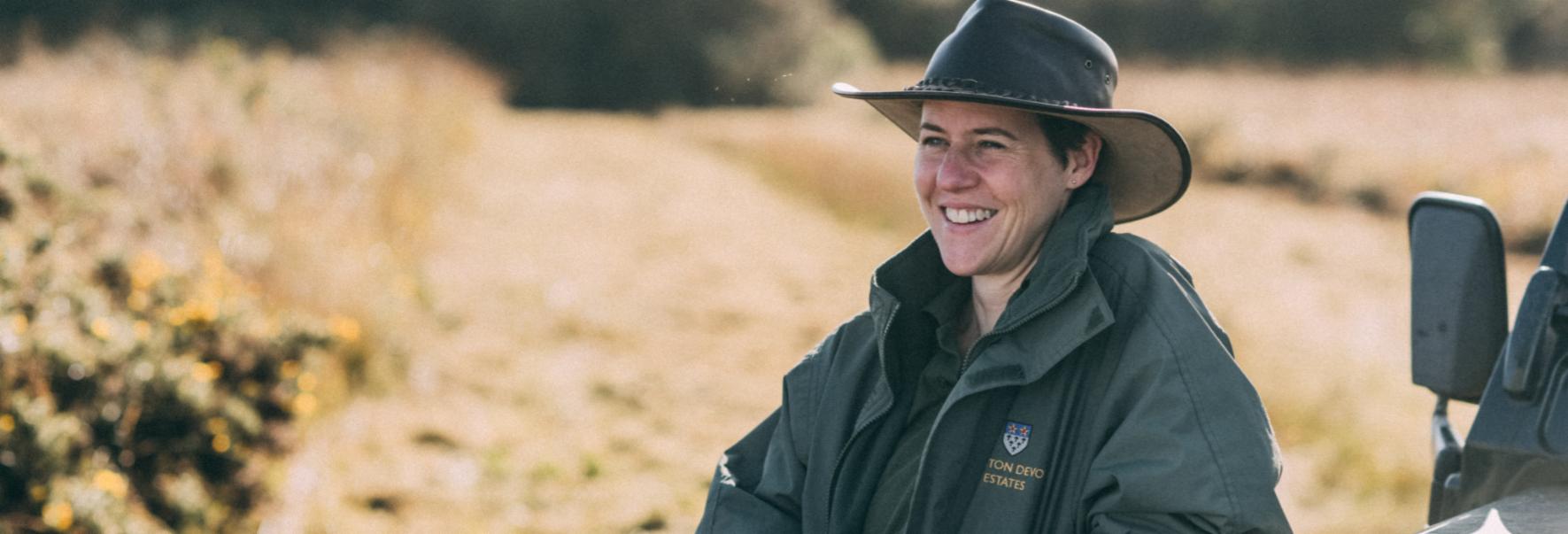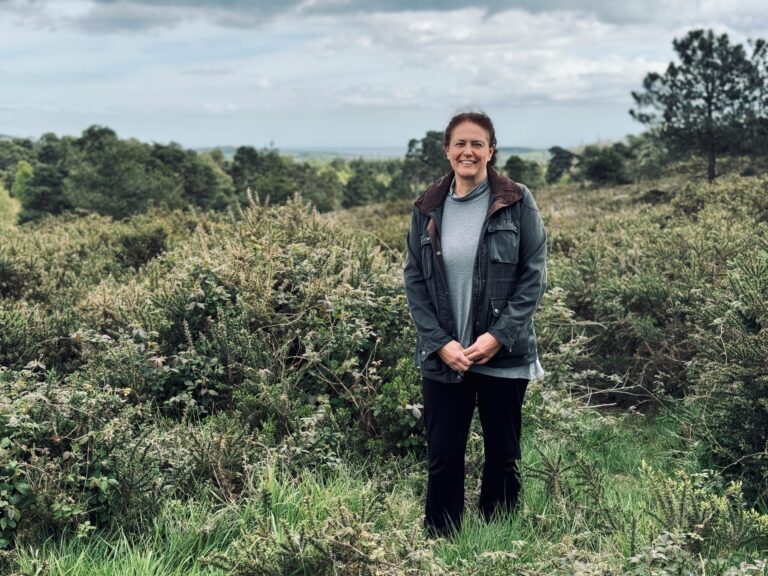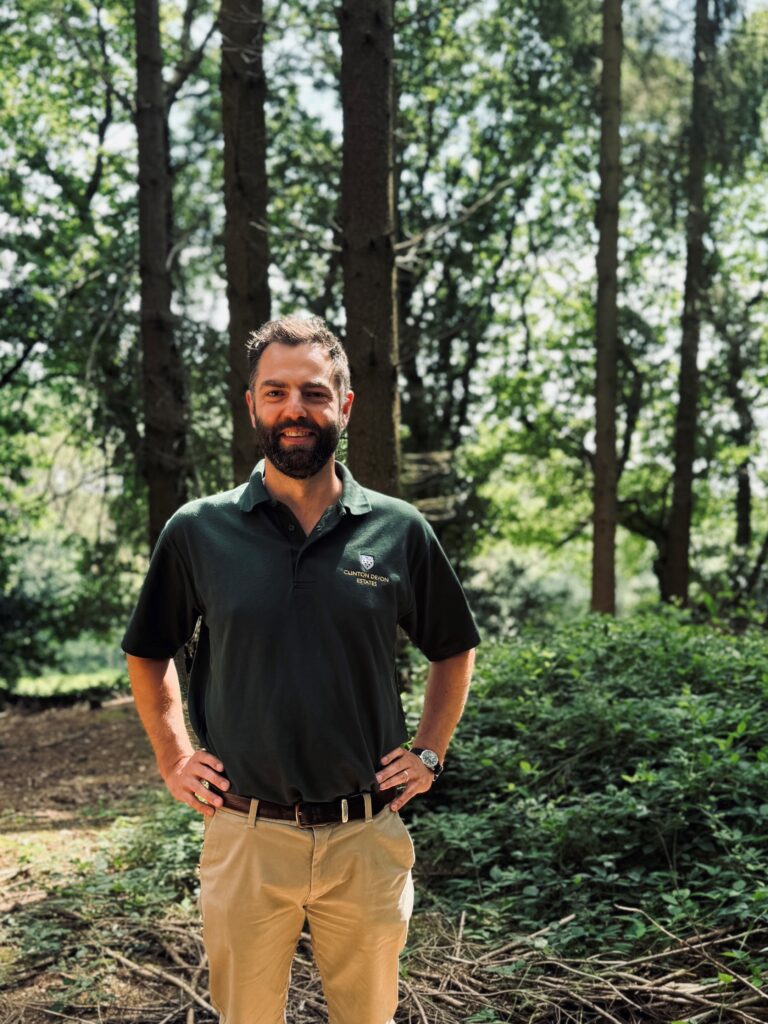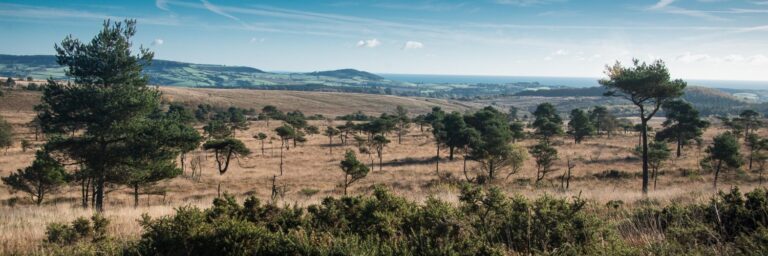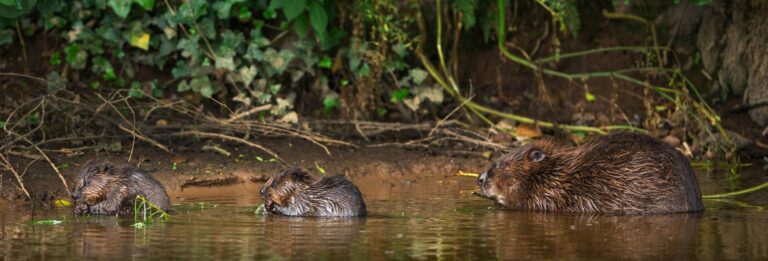Why we’re working hard to protect Britain’s bats…
As dusk falls, hundreds of nocturnal predators set off across the Devon countryside to feed, writes Kate Ponting, Countryside Learning Officer for Clinton Devon Estates…
A single pipistrelle bat weighing five grams, the same as a 20 pence coin, can consume over 3,000 insects in a single night.
Bats do well in East Devon: 16 out of the 17 species of bats known to breed in the UK can be found in the county. Our rural landscape with its abundance of woodland and hedges provides protection and food as well as features to help bats navigate across the countryside.
An evening walk by the River Otter last summer revealed five bat species including both the smallest and largest species. In the gloom, the presence of bats and their identification, would be very difficult without bat detectors; electronic devices that bring the bats’ echolocation calls into an audible range for human ears to hear. Each species shouts at a slightly different frequency enabling them to navigate and locate prey, while enabling us to identify which species is passing acrobatically overhead.
From late September bats will start to return to their winter roosts. Beer Quarry Caves, the historic underground network in the limestone owned by Clinton Devon Estates, is internationally important as a bat hibernaculum. Greater and lesser horseshoe bats, along with a few other types, use the regular temperature offered by the caves to hibernate in the winter. Greater horseshoe male bats are often grouped in clusters, but females and all lesser horseshoes tend to be more solitary.
The farmland around the caves is protected under a countryside stewardship agreement to provide measures to support this bat population.
Several years ago on East Budleigh Common, redundant military buildings from Dalditch Camp were repurposed as bat hibernacula and support the roosts of horseshoe, long eared and other bats. New signage has recently gone up to encourage anyone who might be drawn to the graffiti clad buildings hidden in the trees, to leave the bats in peace. However, anyone with an interest in knowing more about these flying mammals can join organised bat emergence walks which are usually scheduled for warm, early summer evenings.
The Devon Wildlife Trust launched the Devon Greater Horseshoe Bat Project to secure the future of this species in the county and works across important roost sites around Devon. In 2017 a group, including project members, the East Devon AONB and Clinton Devon Estates came together with local ecologists, businesses and organisations to champion bats in the village of Beer.
The Bat Friendly Beer Working Group shares similar aims to the Devon Wildlife Trust project including to promote Beer as bat friendly, encourage collaborative working to maximise opportunities and deliver a number of benefits for the community. Communities which are bat friendly quickly realise that what is good for greater horseshoe bats is good for other bat species, as well as other wildlife, and people too!
FACT FILE
- Greater horseshoe bats have seen their numbers plummet by over 90 per cent in the last 100 years due to various factors such as disturbance to their roosts and intensive agricultural practices. Devon remains a stronghold for this endangered species with about a third of the UK’s population thought to be surviving in the county.
- Clinton Devon Estates supported the Devon Wildlife Trust’s Devon Greater Horseshoe Bat Project which is working towards sustaining the county’s bat population.
- The five-year partnership project was made possible by National Lottery players through a £785,500 Heritage Lottery Fund grant and involves local landowners, farmers and communities across the county working together to ensure Devon remains a place where greater horseshoe bats can live and flourish.
- There were more than 25 bat festival events this summer and as part of its involvement, the Estates hosted a farm walk near Beer, which was followed by an underground cave walk at Beer Quarry Caves, and a number of practical conservation days.
- The Estates is also one of several member organisations belonging to the Bat Friendly Beer Working Group which held its first meeting in May 2017 and meets at least three times a year. With Beer Quarry Caves, an internationally acclaimed bat hibernaculum, located on the outskirts of the village, through collaborative working the group aims to deliver a number of benefits for the bats, other wildlife, nearby residents and visitors to Beer.
- In 2014 the Estates was accepted onto DEFRA’s Higher Level Stewardship scheme for two of its tenanted farms near Beer; the scheme requires farmers to carry out a package of habitat management plans designed to deliver significant environmental benefits in high-priority areas.
- In Beer, this has been to support the foraging habitats of the greater horseshoe bat, while raising public awareness through educational on-site visits.
